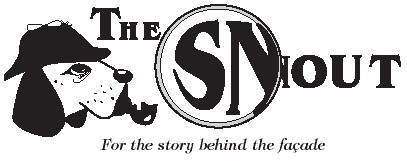Monday, July 30, 2012
RITA MILJO - AN INDOMITABLE SPIRIT
Saturday, July 21, 2012
PITY OUR LITTLE LEOPARD
When the first Europeans arrived at the Cape, the plains and mountains were teeming with wild life, including large mammals. Today few species remain and the Cape Leopard has made the TOPS (Threatened or Protected Species) listing, due to the threats to this species. Part of this can be attributed to the fact that more than a million animals are sport hunted in South Africa every year with more animals reputedly being shot in the Eastern Cape, home of the pristine Baviaanskloof Mega Reserve and World Heritage Site, than in any other province - according to the Patterson report. This rugged mountain wilderness area, relatively untouched by human development, is a domain in which this unique little Leopard (half the size of the other African leopards) has survived. So too, it has found refuge in the remaining wilderness of the Cape fold mountains.
Although their diet primarily consists of klipspringers and dassies, with porcupines, duiker, other antelope species and rodents making up the rest, leopards are known to kill sheep, where available and left unguarded. In retaliation leopards, as well as jackals and caracals, are sometimes killed by farmers by being shot or caught in cruel gin traps or through the use of the 1080 poison, banned in the USA and Europe, and hunted with dogs. The unintended consequences are that many innocent animals are also killed, causing a serious disturbance in the eco-system.
In view of the endangered status and dwindling numbers of the Cape Leopard, two conservation bodies, the Cape Leopard Trust and the Landmark Foundation, have been at the forefront of finding solutions by engaging in research involving the installation of cameras with movement sensors as well as fitting trapped leopards with GPS tracking systems before releasing them back into the wild. Education of farmers regarding non-lethal methods of control is on-going and many farmers, both locally and abroad, are able to manage these systems pro-actively, with good results, through the use of Anatolian Shepherd dogs and Alpacas. Livestock protection collars, herding techniques, other technology aids and kraaling the animals at night is also effective as well as employing herders.
The feud which has been raging for years between sheep farmers and hunters, conservation bodies and provincial officials, culminated in a Wildlife Forum held on 11th June this year, but representation excluded some very knowledgeable environmentalists, who have been vocal against Cape Nature's culling practices of predators. From the start the farmers made their intentions very clear – they wanted a blanket permit for each farmer to decide for himself how to combat predation in any way he deemed fit, while the conservationist/animal welfare contingent was very unhappy about the draft protocol drawn up by Cape Nature with the Predator Management arm of the farming industry.
The draft was criticised as it could re-introduce paramilitary hunt clubs such as Oranjejag in the Free State during the apartheid years, which allowed bands of farmers to invade any farm where a predator was suspected to be hiding and to shoot on sight, with or without permission of the owner. Shooting from helicopters and from the backs of bakkies in specially designed chairs, using spotlights and rifles with telescopic lenses and silencers are employed in the hunts. Recordings of animal sounds are also used to lure predators. This, together with the barbaric and environmentally ruinous use of gin traps, poisons and hunting dogs to hunt jackals, leads to the unintended deaths of many innocent victims and a disturbance of ecological systems, creating havoc in the natural order.
Every non-lethal method of control put forward by the environmental and welfare lobby was rejected by the farming industry, with unconvincing reasons.
There is a dispute between Cape Nature and Dr. Bool Smuts from the Landmark Foundation regarding the amount of animals killed. Cape Nature admits to issuing 400 permits for the period of six months on condition that the farmers gave regular feedback on the amount of predators shot. This worked for one month and then the report- backs dwindled away, so that in the end farmers only admitted to killing some 300 animals.
But in fact Cape Nature, in correspondence in Bolander's possession, admitted to granting 490 permits, each permit allowing 5 caracal and 5 jackal to be destroyed per day, per permit holder for a full 6 months period. According to Dr. Smuts, this would bring the figures killed over a six month period to 894,250 animals rather than the risible figure of 300 admitted to.
So how does all this impact on the Cape Leopard? The issue of permits is at present the subject of a court case that Dr. Smuts has launched against Cape Nature and the Provincial administration, thus causing him to be banned from attending the Wildlife workshop although, as a registered NGO working in the field of predators, he clearly had locus standi.
Says Chris Mercer of CACH: "Unless the farmers become more open to change, negative perceptions against the industry will spread and farmers – along with our wildlife heritage - will be the losers."

